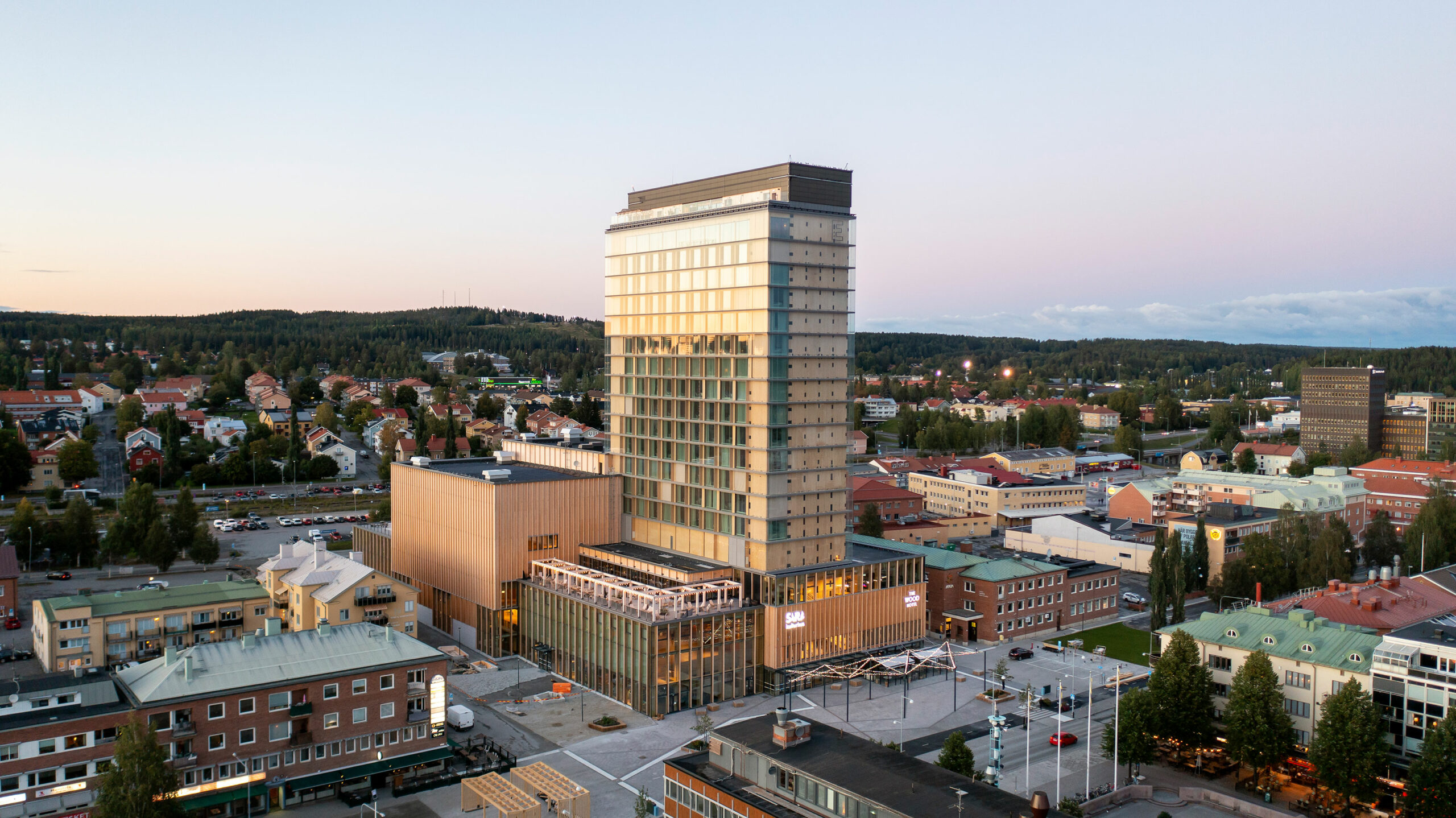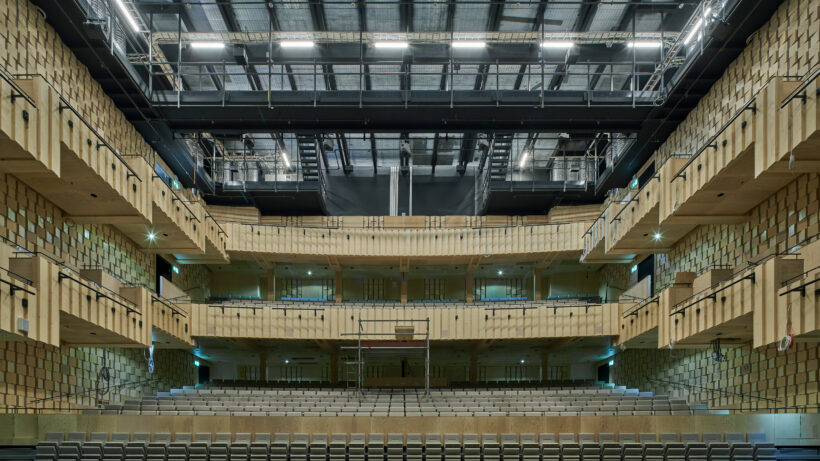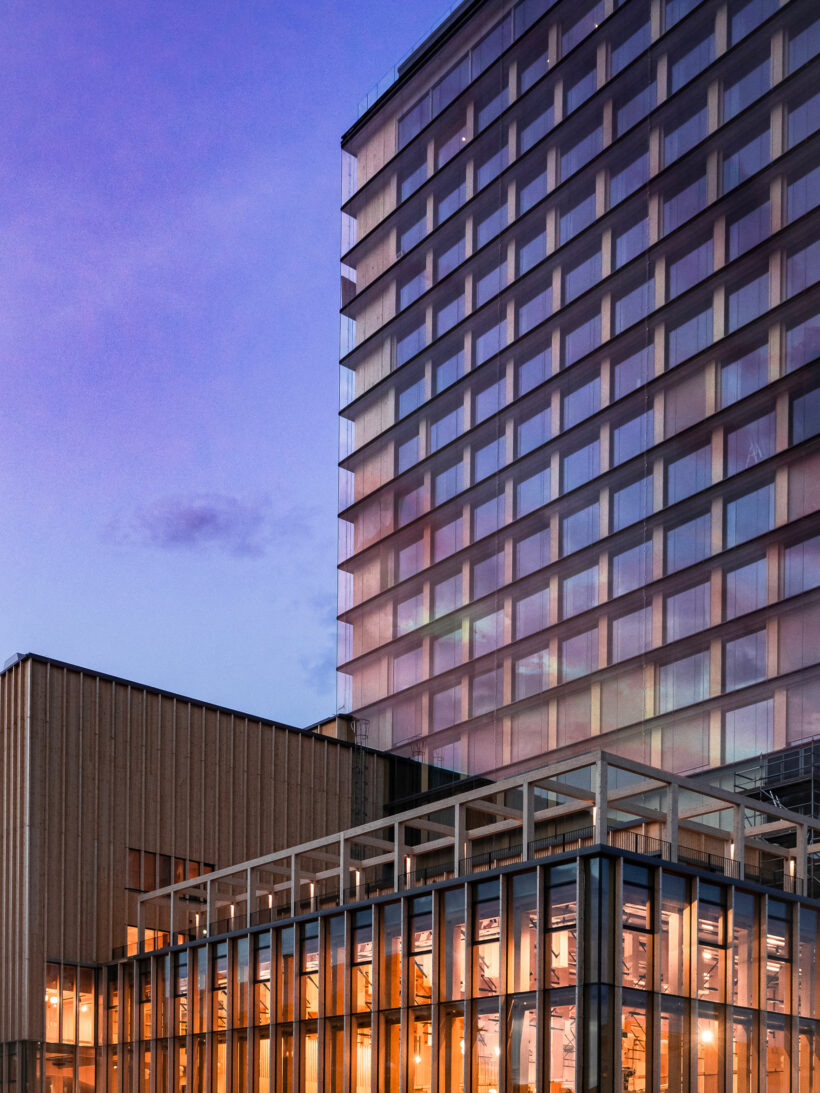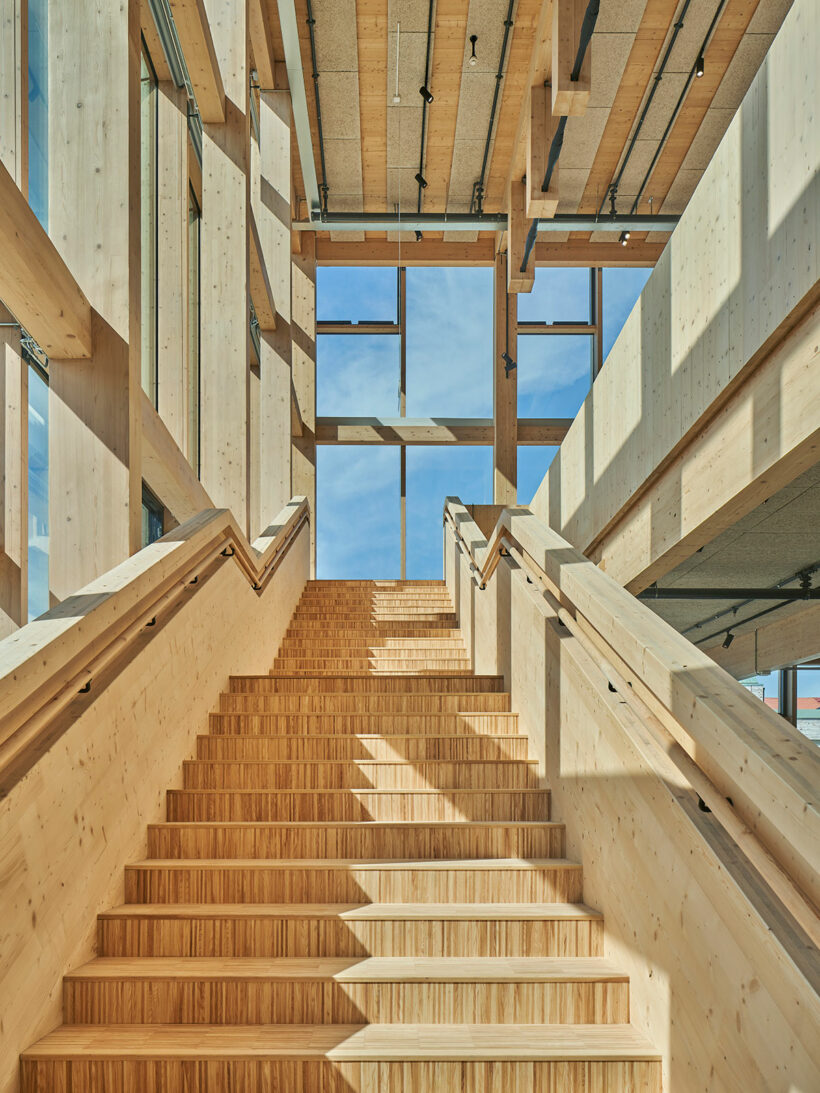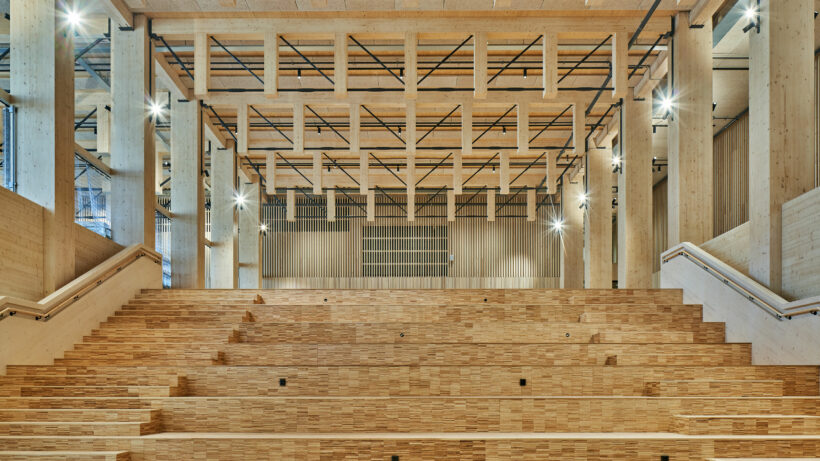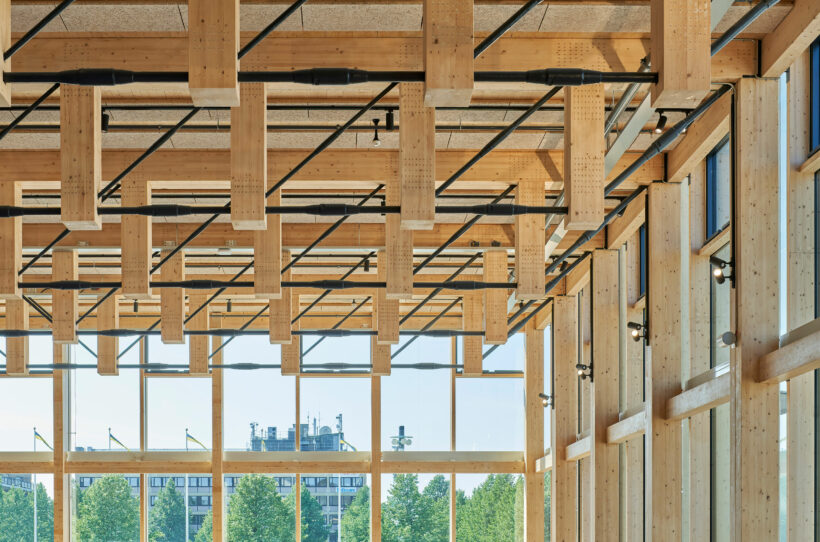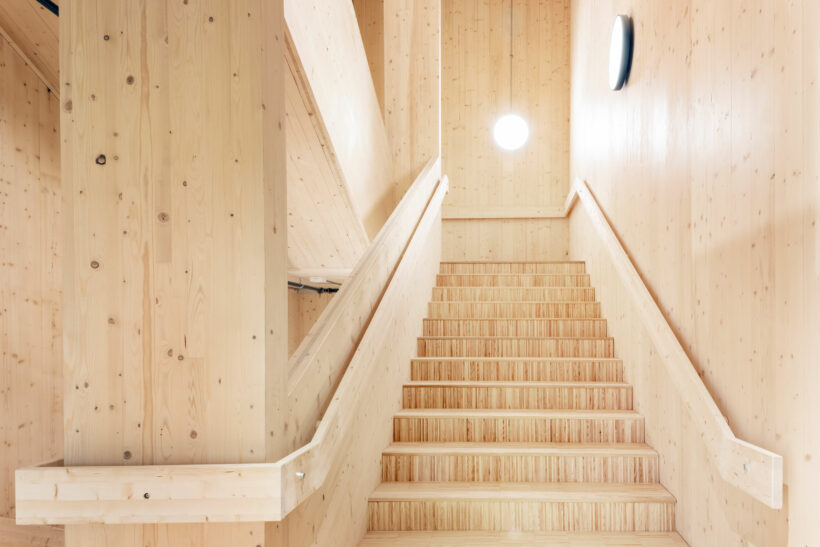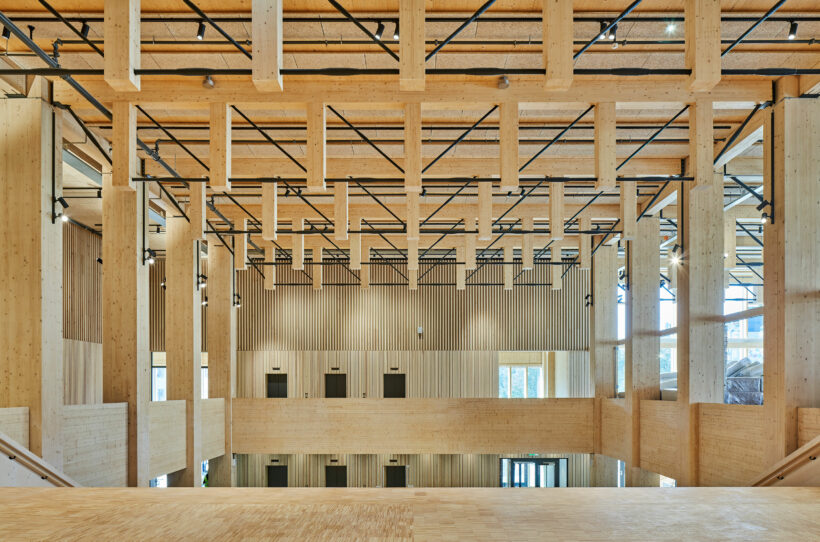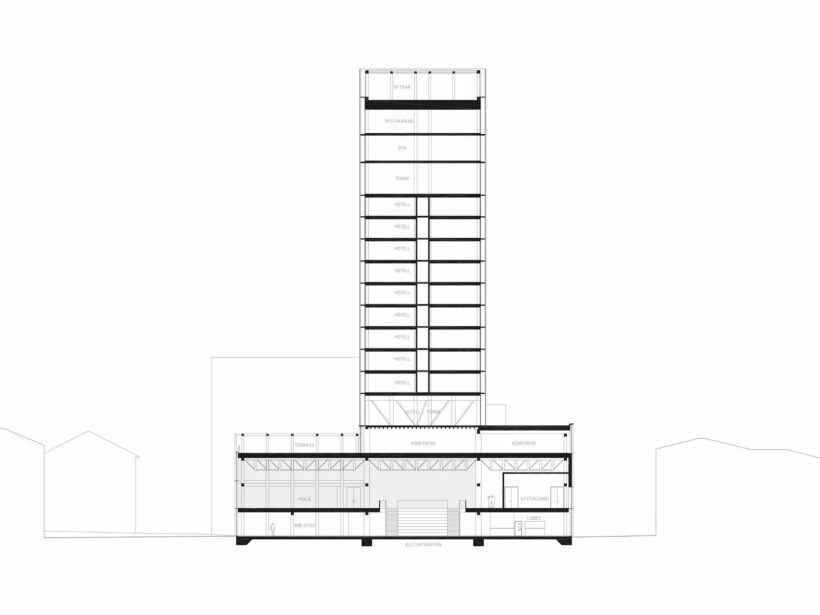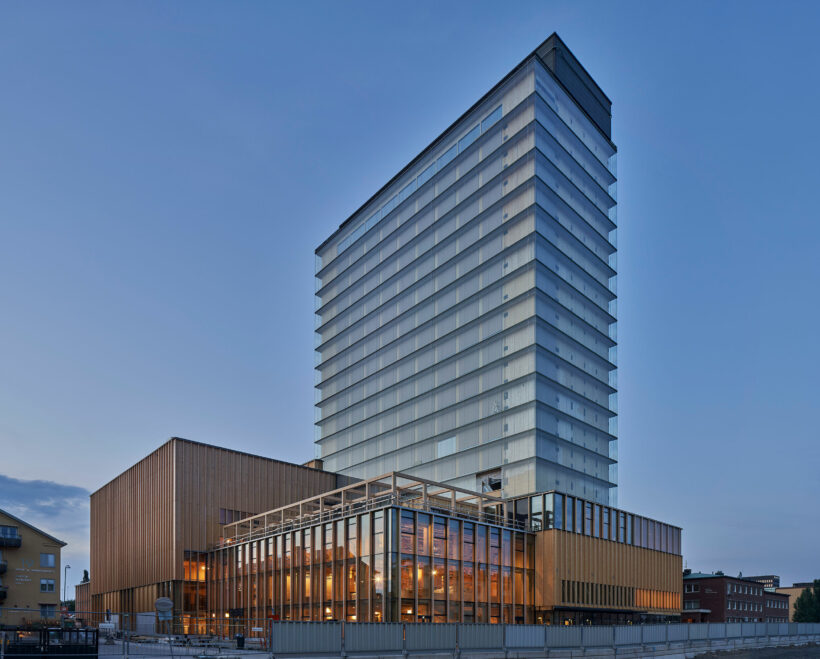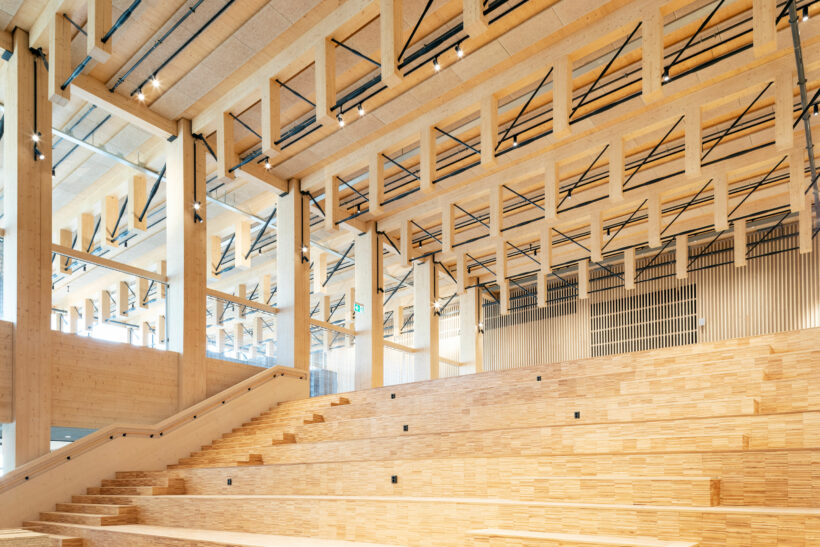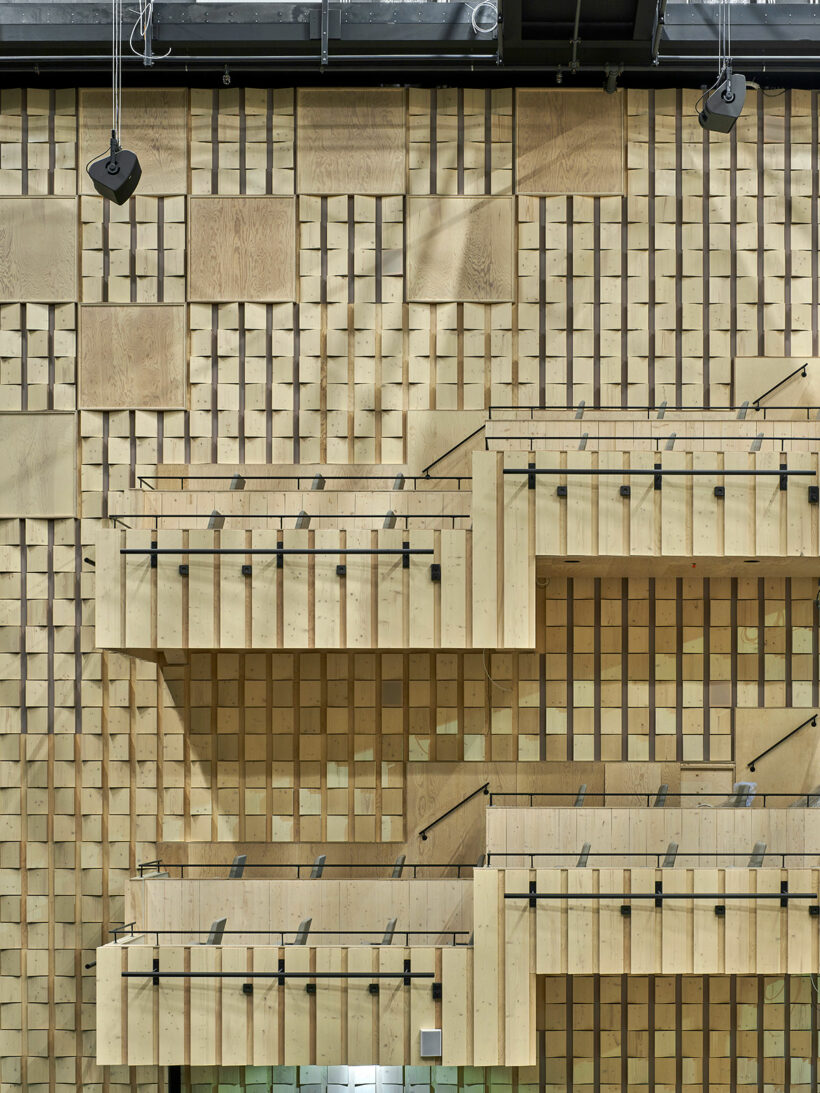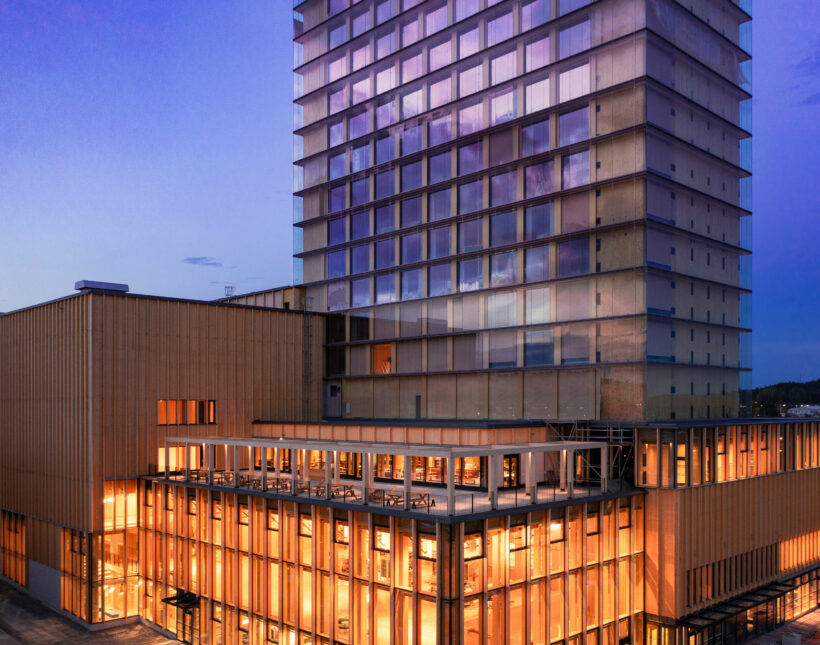A new home for culture
Located just below the Arctic Circle in northern Sweden, Skellefteå has a long tradition of timber building; this was the primary inspiration behind the international competition winning design for the city’s new cultural centre.
The proposal was named Sida vid sida – Side-by-side; a timber-frame tower complex that placed art, performance and literary organisations alongside each other in a spectacular setting. Sara Cultural Centre will be a new home for the Västerbotten Regional Theatre, Anna Nordlander Museum, Skellefteå Art Gallery, as well as the City Library. The complex will also contain a new hotel to accommodate the growing numbers of tourists to the city, as well as to provide a source of revenue for the local authority.
